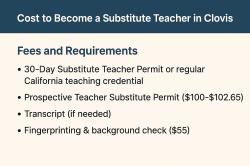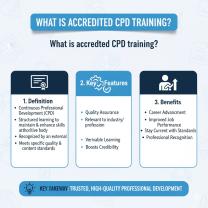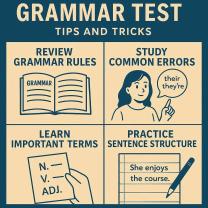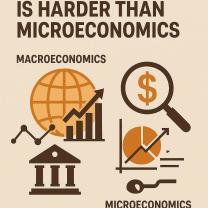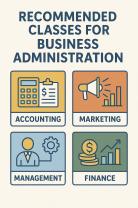Is AP Microeconomics hard?
AP Microeconomics can be challenging for some students, but whether it feels “hard” depends on your background, study habits, and interest in economics. Here’s a detailed breakdown:
Why AP Microeconomics Can Be Hard
New Concepts: It introduces topics like supply and demand shifts, elasticity, market structures, and cost curves that may be unfamiliar.
Graphs Everywhere: Many questions require understanding and drawing graphs, which can be tricky if you’re not comfortable interpreting them.
Application vs. Memorization: You can’t just memorize definitions—AP Micro questions often ask you to apply concepts to real-world scenarios.
Time Pressure: Exams have multiple-choice and free-response sections that require quick, accurate thinking.
Tips for Success
Master the Basics: Make sure you understand supply, demand, elasticity, and costs thoroughly—they’re the foundation for all other topics.
Practice Graphs: Be able to draw and interpret graphs like production possibilities, cost curves, and market equilibrium.
Use Real-World Examples: Relate concepts to everyday situations, like why gas prices rise or how a company sets prices.
Do Practice Exams: AP Micro past exams are a goldmine for understanding question styles and timing yourself.
Focus on Key Terms: Terms like marginal cost, marginal revenue, opportunity cost, and consumer surplus are frequently tested.
Ask for Help Early: If a concept confuses you, seek help from teachers, tutors, or online resources before it snowballs.
Bottom line: AP Microeconomics is manageable if you stay consistent, practice graphs, and focus on understanding how concepts interact. Students who actively apply the ideas often find it easier than those who just try to memorize.
Here’s a practical AP Microeconomics study roadmap you can follow over roughly 8–10 weeks to prepare effectively:
Week 1–2: Foundations
Key Concepts: Scarcity, opportunity cost, production possibilities curve (PPC), supply and demand basics.
Focus:
Understand why resources are limited and trade-offs exist.
Learn demand and supply curves, shifts vs. movements along the curve.
Practice: Draw PPC and simple supply/demand graphs. Answer basic multiple-choice questions.
Week 3: Elasticity
Key Concepts: Price elasticity of demand/supply, income elasticity, cross-price elasticity.
Focus:
Calculate elasticity using formulas.
Understand what makes demand/supply more or less elastic.
Practice: Solve problems relating elasticity to revenue and taxes. Draw graphs showing elasticity effects.
Week 4: Consumer & Producer Theory
Key Concepts: Utility, marginal utility, budget constraints, consumer choice, producer behavior.
Focus:
Understand how consumers maximize satisfaction and producers maximize profit.
Be able to explain law of diminishing marginal utility.
Practice: Simple utility problems and short free-response explanations.
Week 5: Costs and Production
Key Concepts: Short-run vs. long-run costs, fixed/variable costs, marginal cost, average cost, economies of scale.
Focus:
Learn cost curves and how they relate to production decisions.
Understand profit maximization (MR = MC).
Practice: Draw cost curves, identify efficient levels of production.
Week 6: Market Structures
Key Concepts: Perfect competition, monopoly, monopolistic competition, oligopoly.
Focus:
Know characteristics of each market structure.
Understand pricing and output decisions.
Practice: Compare and contrast graphs for each market type.
Week 7: Factor Markets & Market Failures
Key Concepts: Labor markets, marginal productivity theory, public goods, externalities.
Focus:
How wages are determined.
Why markets sometimes fail and the role of government.
Practice: Draw supply/demand for labor, illustrate externalities.
Week 8: Review & Practice Exams
Focus:
Take full-length practice exams under timed conditions.
Review weak areas from previous weeks.
Memorize key definitions and formulas.
Practice: Mix multiple-choice and free-response questions.
Additional Tips
Use Flashcards for terms like “marginal cost,” “consumer surplus,” and “price floor.”
Draw graphs by hand—it reinforces understanding.
Explain concepts aloud to yourself or a study partner. Teaching is learning.
Practice AP free-response questions: Focus on clear explanations and correct diagrams.
AP Microeconomics can be a challenging yet rewarding course, with its difficulty largely depending on a student's prior knowledge of economics, comfort with mathematical concepts, and ability to grasp abstract ideas and apply them to various scenarios. It often requires strong analytical skills and the ability to interpret and create graphs.
Understanding AP Microeconomics Course Difficulty
AP Microeconomics is generally considered a moderately difficult AP course. While it's designed to mimic an introductory college-level course, making it more challenging than a standard high school class, it's often seen as less daunting than some other AP sciences or humanities.
Concepts over Complex Math: The math involved is typically not beyond a middle school level, and basic calculators are usually allowed. The challenge lies more in understanding the abstract economic concepts and applying them to diverse situations, rather than complex calculations.
Pace: Since it's often a one-semester course, the pace can be fast. Students need to be able to absorb new information quickly and continuously practice to solidify their understanding.
Graphing: A significant part of the course involves understanding, interpreting, and drawing various economic graphs (e.g., supply and demand, cost curves, market structures). This can be a major hurdle for students who struggle with visualizing abstract concepts or translating data into graphical representations.
Pass Rate: Historically, the pass rate (scoring a 3 or higher) for AP Microeconomics is comparable to or slightly higher than the average for all AP exams. The percentage of students scoring a perfect 5 is also relatively high, suggesting that dedicated effort can lead to success.
Key Concepts and Topics in AP Microeconomics
The AP Microeconomics course covers how individuals and firms make decisions in the face of scarcity. The College Board organizes the curriculum into six main units:
Unit 1: Basic Economic Concepts: Introduces foundational ideas like scarcity, opportunity cost, production possibilities curve (PPC), comparative advantage and trade, marginal analysis, and consumer choice.
Unit 2: Supply and Demand: This is a cornerstone unit, covering the laws of demand and supply, elasticity (price, income, cross-price), market equilibrium, disequilibrium, shifts in curves, and the effects of government interventions like price ceilings and floors.
Unit 3: Production, Cost, and the Perfect Competition Model: Explores how firms make decisions, including production functions, various types of costs (fixed, variable, total, marginal, average), types of profit (accounting vs. economic), profit maximization, and the characteristics and outcomes of perfectly competitive markets.
Unit 4: Imperfect Competition: Delves into market structures where firms have some market power, including monopolies (and price discrimination), monopolistic competition, and oligopolies (introducing game theory concepts).
Unit 5: Factor Markets: Applies microeconomic principles to the markets for inputs (factors of production) like labor, land, and capital. Key topics include marginal revenue product (MRP), marginal factor cost (MFC), and competitive and monopsonistic labor markets.
Unit 6: Market Failure and the Role of Government: Examines situations where markets fail to allocate resources efficiently, such as externalities (positive and negative), public goods, and common resources. It also covers the effects of government interventions (taxes, subsidies) and issues like income and wealth inequality.
Study Tips for Success in the Course
Success in AP Microeconomics requires consistent effort and strategic study habits.
Understand, Don't Memorize: While there are definitions and formulas, the most important aspect is to truly understand the underlying economic principles and logic. Focus on "why" things happen, not just "what" happens.
Master the Graphs: Graphs are central to microeconomics. Practice drawing and interpreting every type of graph repeatedly. Understand what each axis and curve represents, how shifts occur, and how to identify key points like equilibrium, profit maximization, and deadweight loss. Label everything clearly!
Apply Concepts to Real-World Scenarios: Economics is about real-world decision-making. Think about how the concepts you're learning apply to everyday situations, news events, or businesses. This helps solidify understanding.
Practice, Practice, Practice: Work through as many practice problems (both multiple-choice and free-response) as possible. This is the best way to identify areas where you need more practice and to get comfortable with the application of concepts.
Utilize Online Resources: Websites like Khan Academy, ACDC Econ (Jacob Clifford's videos), and the College Board's official AP Microeconomics course page offer excellent explanations, videos, and practice questions.
Form a Study Group: Discussing concepts with peers can deepen your understanding and allow you to learn from different perspectives. Explaining a concept to someone else is a great way to ensure you truly understand it yourself.
Use Your Teacher's Office Hours: If you're struggling with a particular concept, don't hesitate to ask your teacher for help.
Don't Round Too Early: When doing calculations, keep all significant digits in intermediate steps to avoid rounding errors in your final answer.
Preparing for the AP Exam Effectively
The AP Microeconomics exam consists of two sections: a multiple-choice section (60 questions, 70 minutes, 66.65% of score) and a free-response section (3 questions, 60 minutes, 33.35% of score). Effective preparation involves:
Know the Exam Format: Understand the timing and weighting of each section. This helps you allocate study time appropriately.
Review All Units: Systematically go through all six units of the course. Use study guides or the official College Board Course and Exam Description to ensure you cover all topics.
Timed Practice Exams: Take full-length practice exams under timed conditions. This builds stamina and helps you manage your time effectively on test day.
Analyze Free-Response Questions (FRQs):
Review past FRQs and their scoring guidelines available on AP Central.
Pay close attention to task verbs (e.g., "Explain," "Calculate," "Draw a correctly labeled," "Show/Label/Plot/Indicate") to understand exactly what's being asked.
Practice drawing precise and clearly labeled graphs for FRQs. Incorrectly labeled axes or curves will lose points.
Show your work for all calculations to earn partial credit.
Be concise; don't write lengthy introductions or restate the question. Get straight to the point.
Master Vocabulary: Economics has a precise vocabulary. Ensure you know the exact definitions of all key terms.
Focus on Weak Areas: Use practice tests to identify topics where you consistently make mistakes. Dedicate extra study time to these areas.
Study Guides/Review Books: Many students find commercial review books (e.g., "5 Steps to a 5") helpful for a condensed overview and practice.
Common Challenges Students Face in AP Microeconomics
Students often encounter specific hurdles in AP Microeconomics:
Abstract Thinking: Economics requires thinking in models and abstractions, which can be difficult for students more accustomed to concrete concepts.
Graphical Analysis: As mentioned, drawing and interpreting graphs accurately is a major stumbling block for many. Small errors in labeling or drawing can lead to lost points.
Applying Concepts: Students might understand a concept in isolation but struggle to apply it to a new or complex scenario, especially in FRQs.
Distinguishing Micro vs. Macro: Students taking both AP Microeconomics and AP Macroeconomics sometimes confuse concepts between the two, as they both use similar terminology but apply it at different levels of economic analysis.
Pace of the Course: The high volume of material covered in a single semester means that falling behind can quickly become overwhelming.
Economic Intuition: Developing "economic intuition" – the ability to anticipate outcomes and understand the underlying logic – takes time and consistent practice. Rote memorization isn't enough.
Precision in Language: Using precise economic terminology is critical. Vague language or incorrect terms can lead to misinterpretation and lost points.





